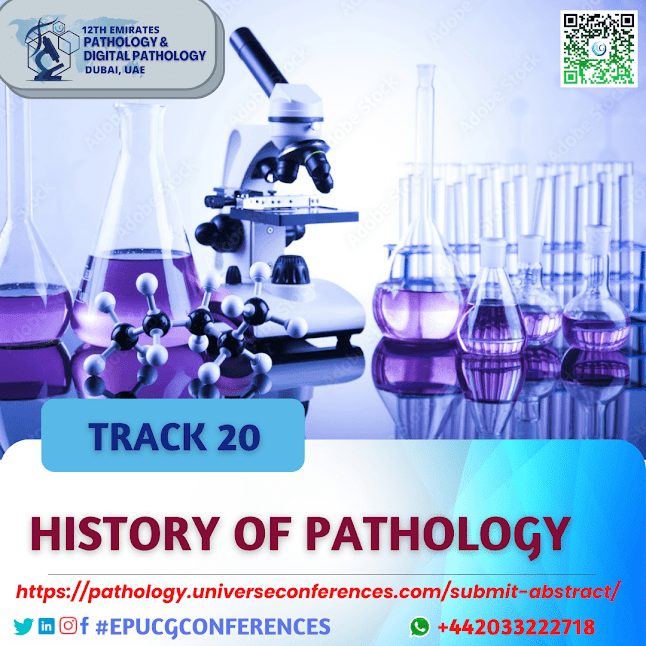Unlocking the Secrets of Immunohistochemistry: A Pathologist's Perspective
Immunohistochemistry (IHC) is a powerful and essential tool in the world of pathology and biomedical research. This technique allows scientists and clinicians to visualize the distribution and localization of specific proteins within tissue sections, providing crucial insights into disease mechanisms, diagnostics, and treatment strategies. Whether you're a seasoned pathologist, a medical student, or just curious about the intricacies of medical science, understanding IHC can offer a fascinating glimpse into the microscopic world of tissues and cells.
At its core, IHC is a method used to detect specific antigens (proteins) in
tissue sections by leveraging the principle of antibodies binding specifically
to these antigens. This interaction is then visualized through various labeling
techniques, allowing us to see where these proteins are located within the
tissue.
The IHC Process: A Step-by-Step Guide
Fixation: The
first step involves preserving the tissue sample to maintain its structure and
the integrity of its proteins. Formalin is commonly used as a fixative.
Embedding: The
fixed tissues are then embedded in paraffin wax, providing a solid block that
can be sliced into thin sections.
Sectioning:
Using a microtome, thin slices (typically 4-5 micrometers) are cut from the
paraffin-embedded tissue and mounted onto microscope slides.
Deparaffinization and Rehydration:
To remove the paraffin and rehydrate the tissue sections, the slides undergo a
series of washes in xylene and alcohol solutions.
Antigen Retrieval:
This step involves unmasking antigens that may have been altered during
fixation. Techniques like heat-induced epitope retrieval (HIER) or enzymatic
digestion are employed to expose these antigens.
Blocking:
Non-specific binding sites are blocked to prevent background staining. This is
often achieved using normal serum or specific blocking agents.
Primary Antibody Incubation:
The tissue sections are incubated with a primary antibody specific to the
target antigen.
Secondary Antibody Incubation:
A secondary antibody, which binds to the primary antibody, is applied. This
secondary antibody is usually conjugated to an enzyme (like horseradish
peroxidase) or a fluorescent dye.
Visualization:
If an enzyme-conjugated secondary antibody is used, a chromogenic substrate is
added. The enzyme converts this substrate into a colored product that
precipitates at the site of the antigen. If a fluorescent dye is used, the
tissue is visualized under a fluorescence microscope.
Counterstaining:
A counterstain, such as hematoxylin, is often applied to provide contrast and
help visualize the overall tissue morphology.
Why is IHC Important?
Immunohistochemistry plays a pivotal role in both research and clinical
diagnostics:
Cancer Diagnosis:
IHC is widely used to identify specific types of cancer by detecting tumor
markers. For example, HER2 testing in breast cancer helps determine the
appropriate treatment strategy.
Prognostic Information:
The presence or absence of certain markers can provide valuable prognostic
information, guiding treatment decisions and helping predict disease outcomes.
Research Applications:
In research settings, IHC helps scientists study the expression and
localization of proteins in various tissues, contributing to our understanding
of disease mechanisms and potential therapeutic targets.
Infectious Diseases:
IHC can detect specific pathogens or the immune response to infections, aiding
in the diagnosis and study of infectious diseases.
Challenges and Considerations
While IHC is a powerful tool, it does come with its challenges:
Antibody Specificity:
The success of IHC relies heavily on the quality of antibodies used. High
specificity and sensitivity are crucial for accurate results.
Optimization: Each step of the IHC process requires careful optimization to
ensure reliable and reproducible results.
Interpretation: Interpreting IHC results can be complex and often requires
expert knowledge to distinguish between specific staining and background noise.
Conclusion:
Immunohistochemistry
is a cornerstone technique in the field of pathology, bridging the gap between
molecular biology and clinical practice. By allowing us to see where proteins
are located within tissues, IHC provides invaluable insights into the
underlying mechanisms of disease and guides diagnostic and therapeutic
decisions. As technology advances, the applications of IHC continue to expand,
promising even greater contributions to medical science and patient care.
-----------------------
Conference
Name: 14th Emirates Pathology,
Digital Pathology & Cancer Conference
Short
Name: 14EPUCG2024
Dates:
December 17-19, 2024
Venue:
Holiday Inn Dubai, UAE & Online
Email: pathology@universeconferences.net
Email:
pathology@universeconferences.com
| Call Us: +1 (207) 707-7298
Visit:
https://pathology.universeconferences.com/
Submit
here: https://pathology.universeconferences.com/submit-abstract/
Register
here: https://pathology.universeconferences.com/registration/
Online Registration here: https://pathology.universeconferences.com/virtual-registration/
WhatsApp
us at: https://wa.me/442033222718?text=
#ScienceCommunication #MedEd #ResearchCommunity #ScientificResearch #LabLife #Biotech #HealthTech #PathologyConference #BioTechEvents #MedicalConferences #ScienceEvents #ResearchSymposium #cytology #pathology #histology #microscope #laboratory #science #cytopathology #microbiology #anatomicpathology #medical #labtech #cytopath #cyto #pathologist #clinicalpathology #cell #cancer #biochemistry #specialstains #anatomy #hematology #laboratorylife #nucleus #MedicalDiagnosis #Histopathology #DigitalPathology #MolecularPathology #ClinicalResearch #Pathologist #WomenInMedicine #CME #CPD #BrainTumorSurvivor #BrainTumorAwareness #TumorDiagnosis #CancerTreatment #LivingWithCancer #CancerCare #BrainTumorSymptoms #FightCancer #PathologyTechnology #AIMedTech #SmartPathology #AIinMedicine #DigitalHealth #AIAlgorithms #MachineLearningInPathology #Telepathology #RemotePathology #DigitalPathology #PathologyResident #MedicalEducation #ContinuingEducation #PathologyConference #MedicalConference #HealthcareConference #Networking #DigitalPathology #AIinHealthcare #AIDiagnostics #PathologyAI #DigitalDiagnosis #AIPathology #MedicalAI #HealthcareInnovation #BrainTumors #BrainCancer #Glioma #Meningioma #Medulloblastoma #PituitaryAdenoma #citologia #medicine #biology #cells #microscopy #histopathology #anatomiapatologica #Immunohistochemistry #IHC #Pathology #Histology #Immunology #MolecularBiology #CancerDiagnostics #TumorMarkers #CancerResearch #BiomarkerDiscovery #DiseaseMechanisms #MedicalResearch #ClinicalPathology #AntibodyStaining #AntigenRetrieval #FluorescenceMicroscopy #ChromogenicDetection #TissueAnalysis #LabTechniques #Microscopy




Comments
Post a Comment